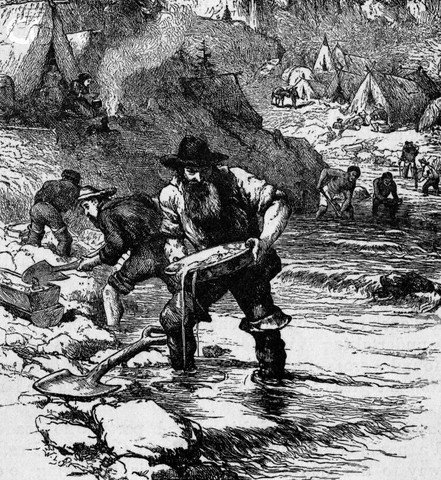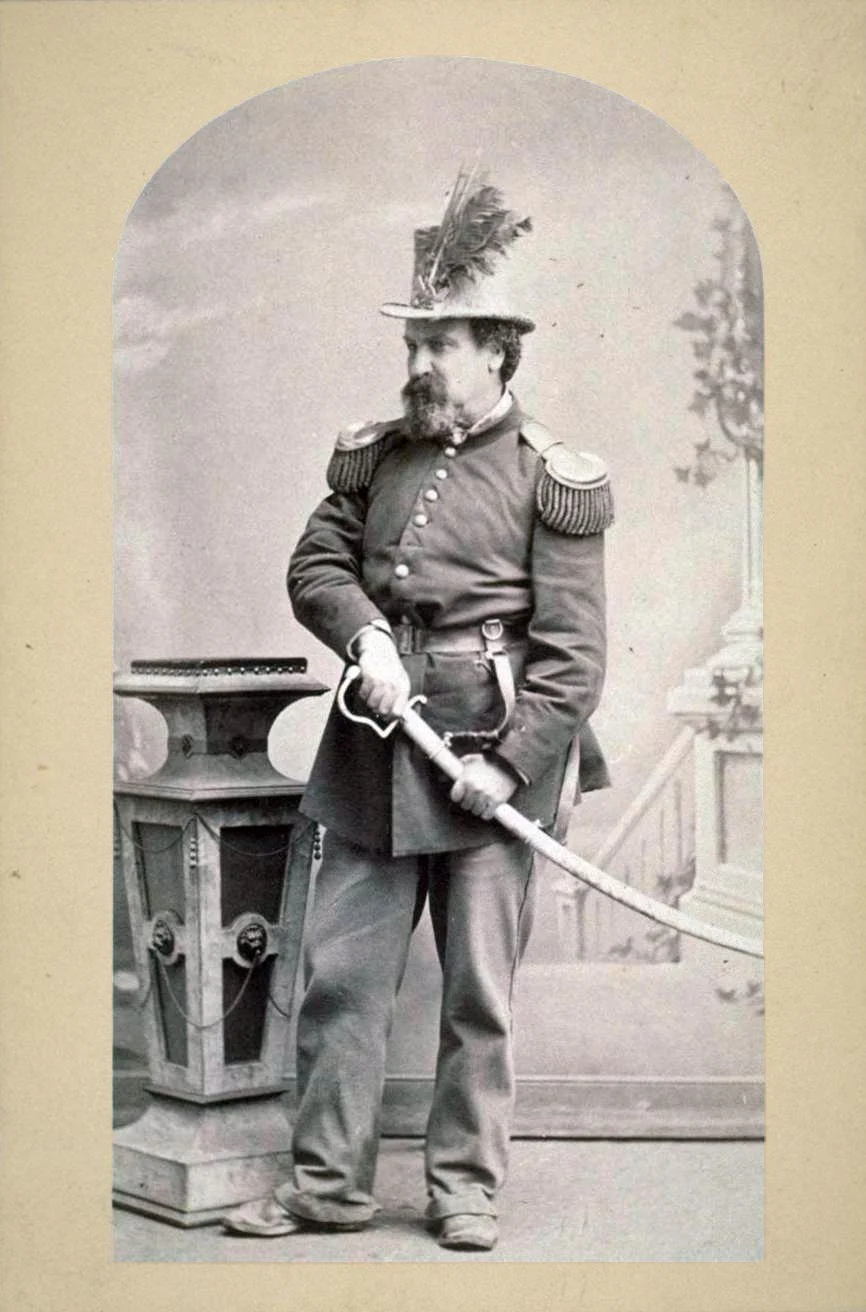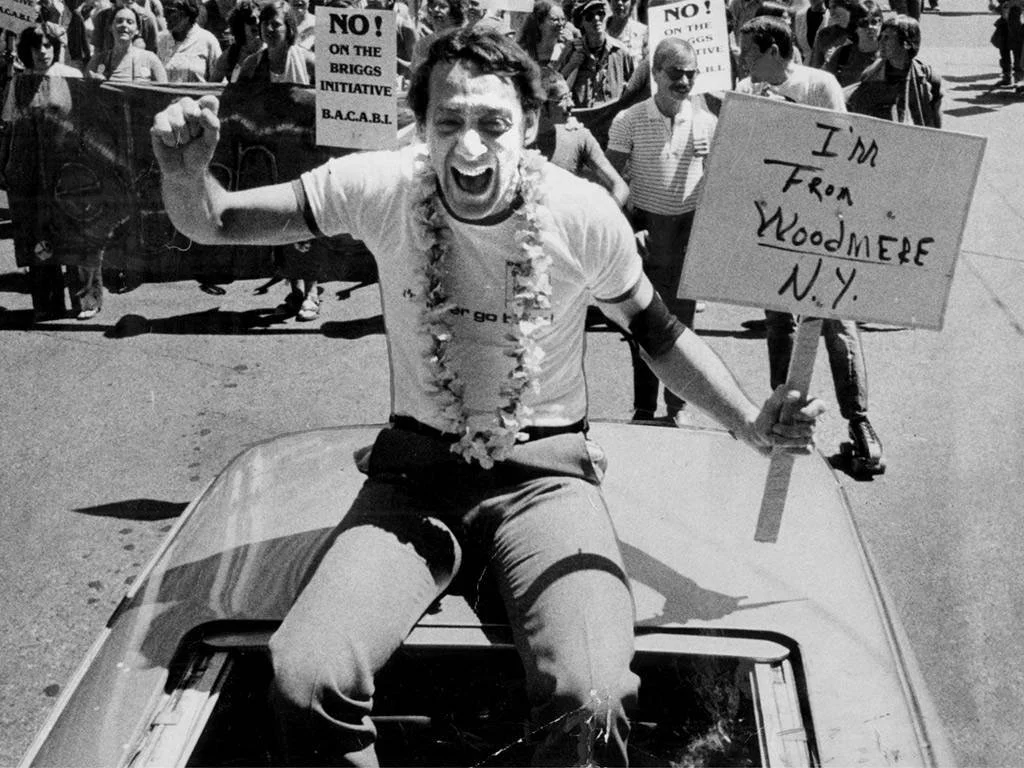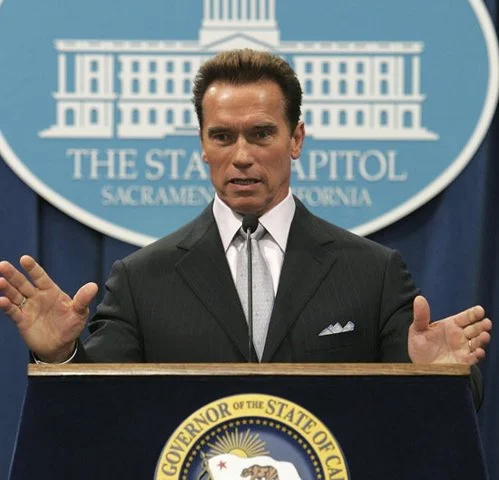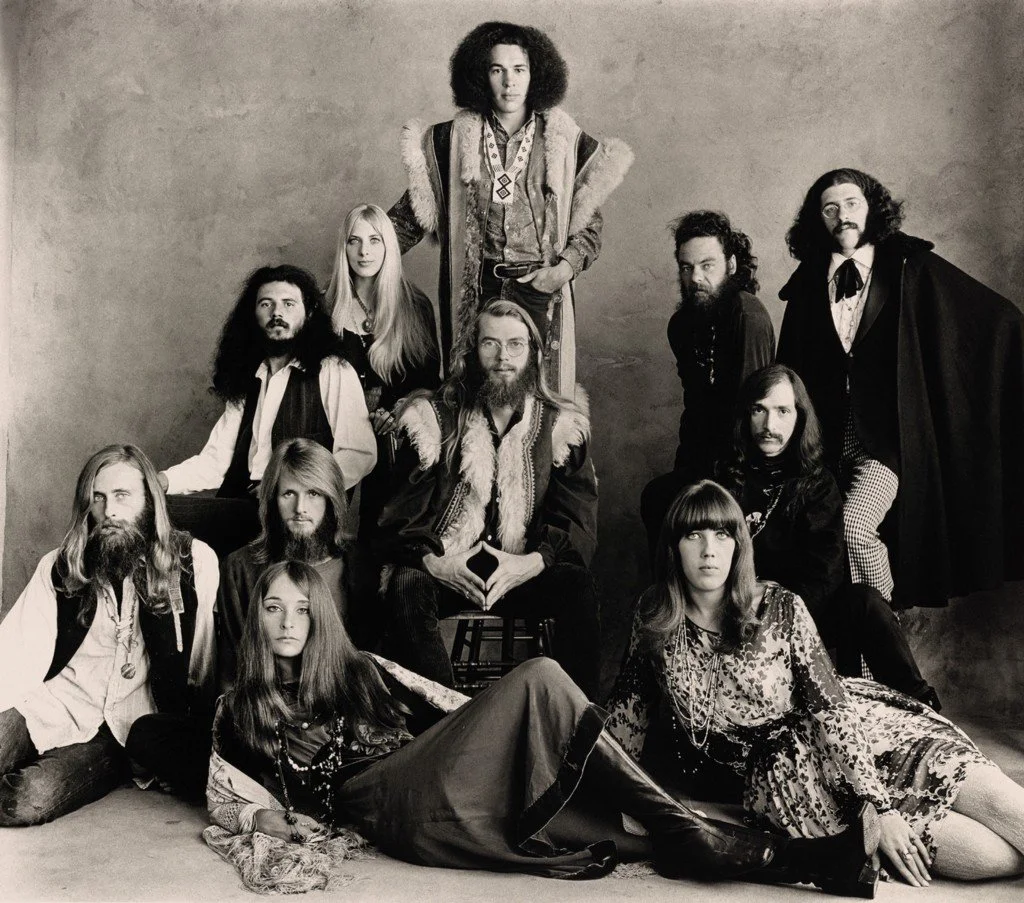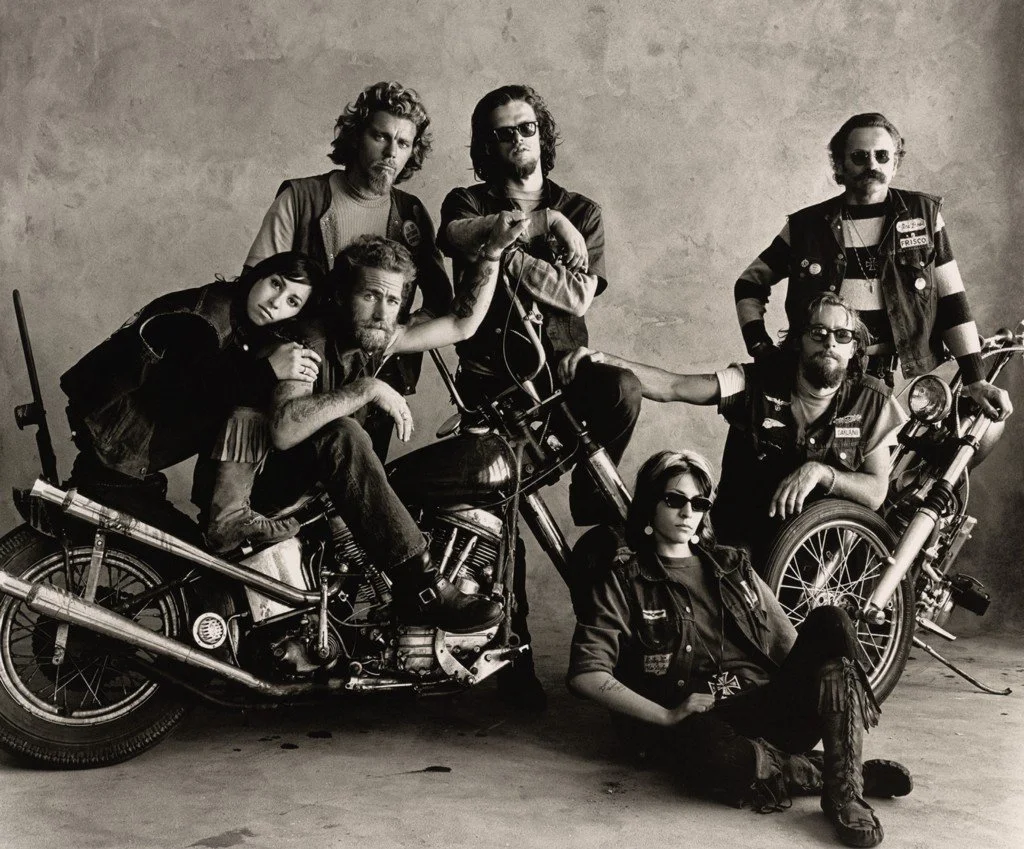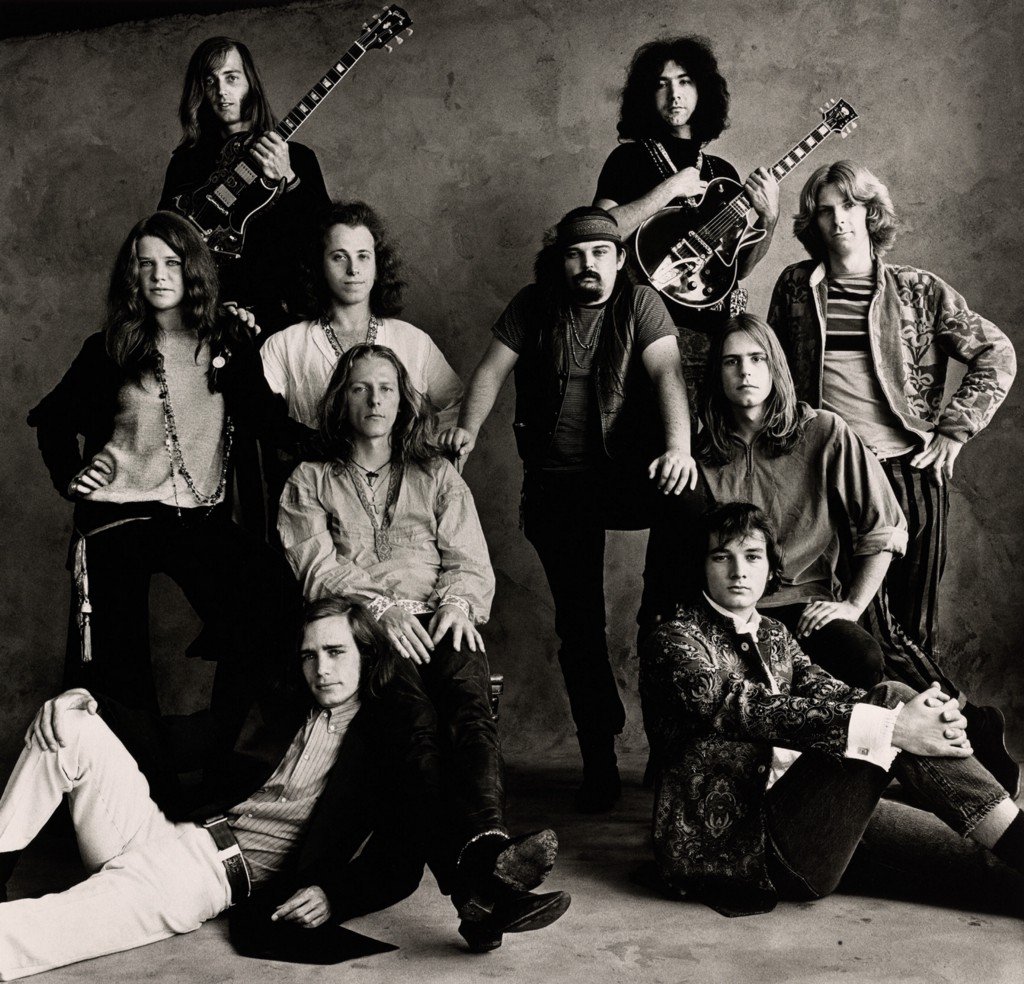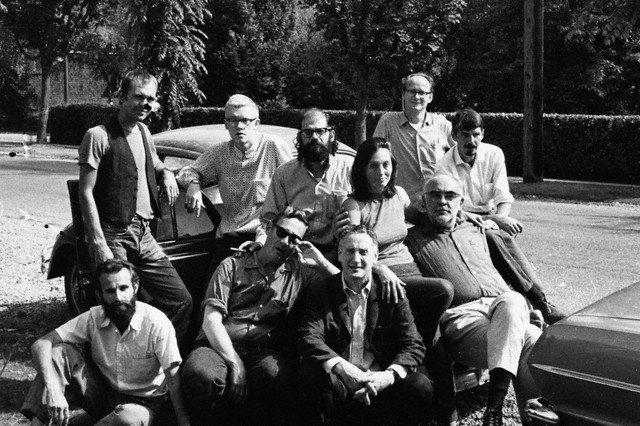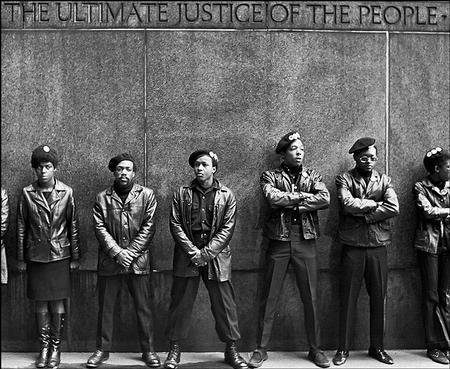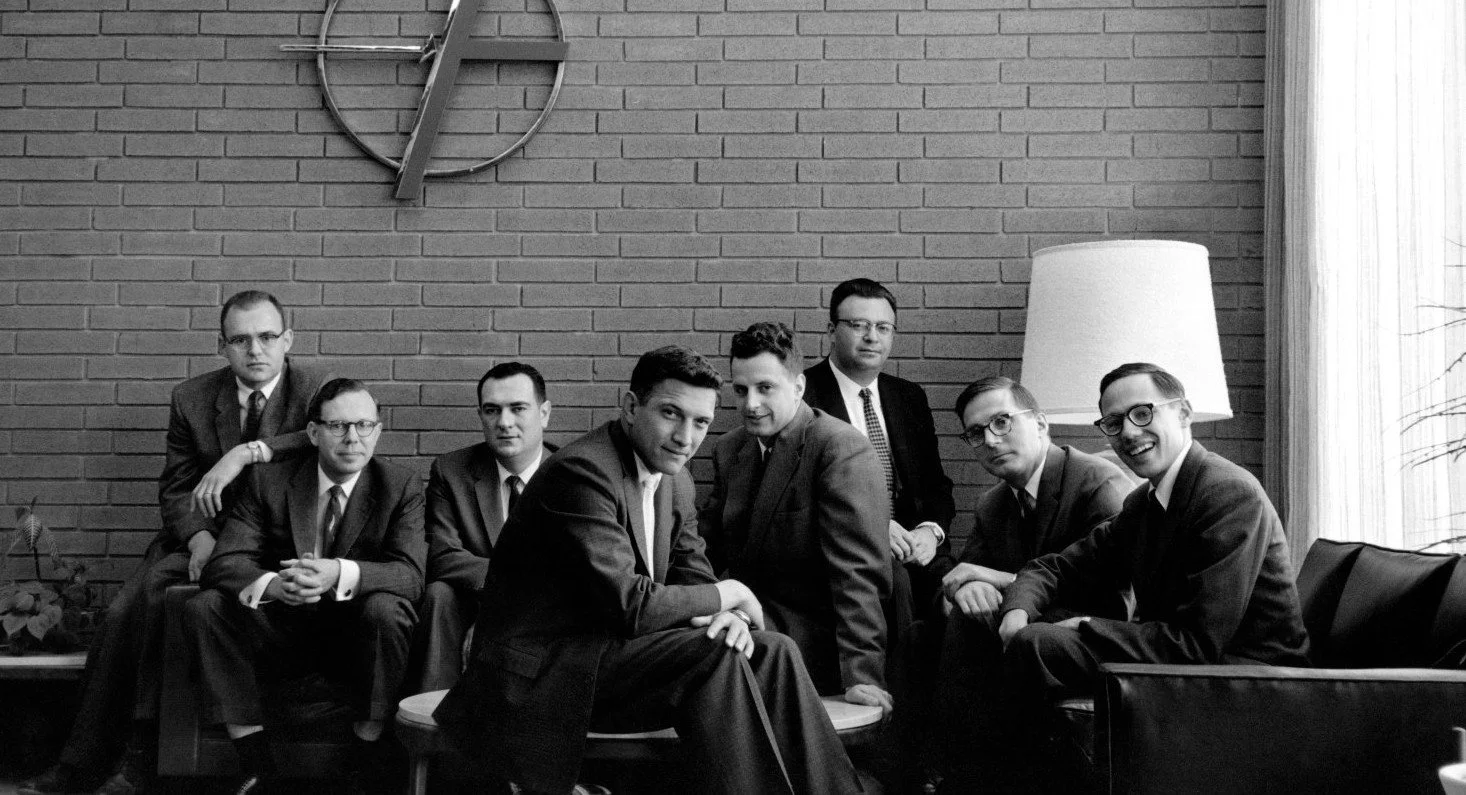The Bay Area - from Bohemian District to Tech Territory
T Phan
Institute of Urbanism and Landscape, The Oslo School of Architecture and Design (AHO)
Intro. San Francisco has long maintained two very different and contradictory city images: the home of the avant-garde cultural elite and the corporate tech innovations. This article investigates different stages of how the image of San Francisco has evolved from counter culture to technophiliac culture in the 40s-80s, the corporate subcultures which ensued and the improbable unity of our contemporary global cyberculture. Further investigation also begs the question in what degree the counter culture was important in shaping the ethos of Silicon Valley.
-
Written fall 2014, was the final product in the 5 ECTS elective course, Urban Representations, AHO. This manuscript was originally written under a different title, “The San Francisco Image – everlasting or everchanging?”. As of today, the author has yet to visit San Francisco.
-
Akersposten webpage (02.03.14)
Alsvik, Bård: Døden i Christiania, Tobias 4, Oslo Byarkivet, Norge 1998
Dagbladet (02.03.14)
Evensberget, Snorre: Bygd og by i Norge, Gyldendal Norsk Forlag AS 1979
Jezebel (06.07.16)
Klingberg, Helge: Kirkegårdsboka, Forsythia Forlag 1997
New Yorker (02.03.14)
NRK webpage (02.03.14) -
-
Origins of a liberal image
Looking at how these two images started from post-war era in the 50s, most stories revolve around a generation occurring out of nowhere, as a result and criticism of its contemporary post-war era. Its origins tell another tale: a long history of liberal, technological and entrepreneurial occurrences. The California Gold Rush generated both capitalistic and eccentric spirit and diverse migrations to San Francisco in late 1848, attracting inhabitants from Latin America, Europe, Australia and China, which coincidentally, are the same continents Silicon Valley is currently attracting its tech workers from. The Gold Rush did not only attract resourceful and wealthy capitalists, but also led to the establishing of California as a state and a 410% increase in population in a time span of 10 years between 1850s to the 1860s. San Francisco even had their own self-proclaimed ruler in 1859, Norton I, Emperor of the United States and Protector of Mexico. When Norton collapsed and died on a random corner of San Francisco, over 30.000 citizens packed the streets to pay homage to this local figure, a testament to the inherent eccentricity and tolerance of San Francisco. The diverse ethnicity would also serve California well, in its stance against slavery in 1861, showing great resilience against secessionists and pro-confederates which was generally dominant in the Southern states. Surprisingly enough, there was also a significant research tradition dating as far back as 1912, in early tech innovation with the invention of vacuum tubes, the predecessor to transistors and semiconductors that would ultimately lead to further advances in computer science. Other notable military research facilities worth mentioning in the Bay Area are Lockheed Corporation (1912), Moffett Federal Airfield (1931), Onizuka Air Force Station (1960) etc. Stanford University would also serve as an incubator to the world’s first Industrial Park, seemingly posing the image of creating a tech basis out of thin air in the 50s (Moorhouse, 1979: 42-43). Not to mention some the most colorful and prominent politicians came from the state of California, Harvey Milk, Richard Nixon, Ronald Reagan and Arnold Schwarzenegger, just to mention a few. Although there is no direct link, these factors may be indicators of the continuation of San Francisco's everlasting image of cool and tolerance, along with its Mediterranean climate.
However, there is one historical event of significance which clearly kick started the cultures, which is the aftermath of WWII. The Cold War was a battle for world supremacy or the image of it, between USA and the Soviet Union through psychological warfare, technological achievements and proxy wars (Wikipedia 1). Interestingly enough, this caused a ripple effect on the American society, generating two very different stances of San Francisco’s public image.
1848 - California Gold Rush.
1863 - "The White Slave", printed in San Francisco conveying the fear by the Southerners of a free state.
1859 - Emperor Norton in full regalia.
1914 - 1922? - Lee de Forrest with the improvement on the vacuum tube.
1978 - Harvey Milk at Gay Pride.
2003 - 2011 - The "governator" Arnold Schwawrzenegger.
Contradictory subcultures
Let us examine the two polarizing stances of San Francisco. On the one side was the governmental and military demand for technological advancements in the 60s and the skilled labor or tech workers feeding it, and on the other side was the counter cultural stance against the established order in the 60s, the hippies, beatniks and nonconformists alike.
The Traitorous Eight, Fairchild Semiconductors.
Technophiles - the demand for technological advances became the Silicon Valley's image, the “technophiles” or establishments feeding the ongoing wars and culture of materialistic consumption. While the Eastern coast became the base of conservative military driven industry not prone to innovation, the west gained a reputation of very liberal and entrepreneurial culture which became the test bed and destination for young ambitious tech workers (Castells & Hall 1994: 31-35). The liberal image in this context became synonymous with opportunism, greed, wealth and free market. Corporate secrets were impossible due to frequent migrations between free structured firms. As seen in the case of the Nobel Prize laureate William Shockley (a prize historians claim he stole himself) bringing the instrumental device for computers, semiconductors, to San Francisco in 1958. Shockley was stubborn and his bad business acumen caused his opportunistic disciples to steal the intellectual property, branch out and start for the spin-off firm Fairchild Semiconductors. They integrated silicon to Shockley's invention where he himself refused. Fairchild themselves, or commonly known as the traitorous eight, fell prey for even more spin-offs, hence the name, Silicon Valley. This tale would become the very strength and symbol of Silicon Valley, as the workers held no grudge, stayed in the area and still met up over professional issues, creating the networks of shared knowledge the world would hear so much about.
Allen Ginsberg, Jack Kerouac and the rest of the Beat Generation.
Reversionaries - meanwhile the counter cultural generation, or the “reversionaries” were criticizing the wealth, commodities, technology and political state of our society and wanted to go back to our roots of living and communal ideologies and lifestyle. They were mostly school drop outs and championed the liberal life of soft drugs, drinking and casual intercourse (Moorhouse 1979: 129). They initiated movements such as the Beat, Summer of Love (hippies), Hell’s Angels, Black Panther Party, equal rights on various levels etc. The reason for why the Bay Area became pivotal for all of these movements, as seen in the origins, is its established culture of acceptance and tolerance for the eccentrics and nonconformists. San Francisco was also unofficial gay capitol of US with between 12-17% of the population count in the 70s. There are some indications of gay marines being discharged from the NAVY settling in San Francisco, but most analysis in general, show high tendency of gay people settling in urban high amenity areas which in turn is a sign of high tolerance in the area. This of course gave San Francisco a distinct identity as the city of alternative life styles (Black, Gates, Sanders & Taylor 1998).
Hippies.
Hell's Angels.
Big Brother and the Holding Company, American rock band.
Beatniks.
Black Panther
Traitorous Eight, the knowledge workers.
Hybrid between technophiliac and counter culture
So how did the reversionaries, which considered industrialism as the extreme state of cultural disease, join forces with the technophiles, the soldiers of the manufacturing industry? Theodore Roszak, the author of, The Making of a Counter Culture in 1969, made a sharp observation between these subcultures. During his time as an educator, he gained a huge follower base of nonconformists and became an important advocate for its generation. He observed that out of all of his counter cultural students, the majority of them were in fact obsessed with science fiction, even to the degree that the publishers could no longer provide enough literature. Alongside the primitive ways of living, Zen Taoism (Jobs was a self-proclaimed Zen practitioner) which colored the San Francisco culture in the end of 60s, as Roszak recalled, was also an intense fascination of devices and space crafts (Roszak 1986: 16). This was in the midst of the New Wave movement in science fiction which had its heyday in the 60s and 70s, promoting artistic sensibility and a softer view on science, as opposed to hard science. Even at the moment of release when 2001: A Space Odyssey was about to be pulled from American cinemas, it was the hippies which contributed to its success with their repeated viewings under the influence of psychedelics. Contradictory is also the oblivious dependence on technology even though they fought against it. Hallucinogens such as LSD was a direct corporate invention by rich psychiatrists for the upper class and ironically enough, it was also part of CIA's botched MKUltra mind-control program (Wikipedia 4). In which hippies became a great supplier and user of (Roszak 1986: 45, 49). Their folk music and rock was also dependent on technology as medium through state-of-the-art amplifiers, light shows etc. ((Roszak 1986: 42). Neither could they react so strongly to the Vietnam War if it was not for the Television, as it became the first broadcast war (University of Virginia student site).
Rest assured, on some level the reversionaries did understand and appreciate the technophiliac spirit. As a means to continue their fight they refocused their efforts in scaling down, democratizing and humanizing technical innovations, as a compromise in their protests against establishments. The earliest example would be the Stewart Brand's Whole Earth Catalog in 1968, a hybrid between the farmer yearning back to how things were, but also an understanding of how technology could benefit in this yearning. Basically, it was a compendium which shared everything of how to create devices, tools and contemporary innovations, alternative ideologies and blue prints of nonconformism and a self-reliance (Roszak 1986: 8). The very same social mission of transforming the world to a better place with technology such as Google (The Guardian webpage).
The technological manufacturing was retracting as governmental spending were shutting down in the 70s and with the crack due to Japanese dominance in 1984 Silicon Valley had to redirect from hardware to software manufacturing. In the same spirit of Brand, many young nonconformists detested the major tech corporations moving into monopolizing the computer for industrial use. This may be the first stance in creating the hybrid culture of both counter- and technophiliac culture of our contemporary time, though the computer technology had not caught up yet. In their view, the computer could potentially give millions access to databases of the world, turning the average Joe into a self-reliant citizen. The school drop outs traded bohemian lifestyle with computer knowledge, outflanking major corporations in the US. They were very aware of creating a softer non-corporate image. Through friendly and folksy club names such as the Itty Bitty Machine Company (an alternative IBM), Kentucky Fried Computers or most prominently the Homebrew Computer Club they managed to start the personal computer age in 1974. Other unknown Homebrew members at the time were Steve Wozniak and Bill Gates, the two PC hardware and software giants of today (Roszak 1986: 38-39).
Stewart Brand's Whole Earth Catalog in 1968.
Continuation of the Silicon Valley lore and ethos
Although the innovations in PC and Microsoft took place in New Mexico in the 80s, the next tech generation chose to migrate to no other places than Silicon Valley. So how had the Bay Area come to be the cradle of innovation across diverse technological advancements and generations? How did the city secure a constant migration of talent pool? There is no hiding the fact that Silicon Valley has a reputation of high-caliber community, the rumor of dynamic networks of opportunistic tech workers seeking partners in crime. The influential and popular networks created by Shockley's misfortunes in the 60s, tales of great tech companies, shared knowledge, collaborations and "friendships" emerging out of the ashes of corporate thefts, backstabbing and broken promises (Castells & Hall 1994: 20). Yet one has to ask, if social networks plays such a vital role here, what significance does Silicon Valley put in the concept of friendship?
In recent years, we have Mark Zuckerberg, the CEO of Facebook, ousting Eduardo Saverin, his co-founder and CFO, but more importantly, his friend. Zuckerberg did so, by not just mere corporate theft, but through financial cunning and trickery by diluting Saverin's stakes in the company. To put it bluntly, Saverin was deceived by his very own company. On the flip side, Saverin is currently worth 7.2 billion dollars, because he still owns 0.4% (30% before dilution) of Facebook by suing Zuckerberg and settling out of court. Even though they did not shake hands per se, Saverin claims there are no hard feelings after the incident (Forbes). After all, becoming one of the world's youngest billionaires without lifting so much as a finger, could also be interpreted as a token of friendship (Business Insider).
1991 - Even in the midst of the Apple vs Microsoft lawsuit, then former CEO of Apple Steve Jobs and then CEO of Bill Gates met up at Jobs' home discussing the future of computing and posing as best pals.
The only known picture online with both Eduardo Saverin and Mark Zuckerberg in the same frame. It appears as if anyt trace of their affiliation has been erased from the internet.
Although the innovations in PC and Microsoft took place in New Mexico in the 80s, the next tech generation chose to migrate to no other places than Silicon Valley. So how had the Bay Area come to be the cradle of innovation across diverse technological advancements and generations? How did the city secure a constant migration of talent pool? There is no hiding the fact that Silicon Valley has a reputation of high-caliber community, the rumor of dynamic networks of opportunistic tech workers seeking partners in crime. The influential and popular networks created by Shockley's misfortunes in the 60s, tales of great tech companies, shared knowledge, collaborations and "friendships" emerging out of the ashes of corporate thefts, backstabbing and broken promises (Castells & Hall 1994: 20). Yet one has to ask, if social networks plays such a vital role here, what significance does Silicon Valley put in the concept of friendship?
In recent years, we have Mark Zuckerberg, the CEO of Facebook, ousting Eduardo Saverin, his co-founder and CFO, but more importantly, his friend. Zuckerberg did so, by not just mere corporate theft, but through financial cunning and trickery by diluting Saverin's stakes in the company. To put it bluntly, Saverin was deceived by his very own company. On the flip side, Saverin is currently worth 7.2 billion dollars, because he still owns 0.4% (30% before dilution) of Facebook by suing Zuckerberg and settling out of court. Even though they did not shake hands per se, Saverin claims there are no hard feelings after the incident (Forbes). After all, becoming one of the world's youngest billionaires without lifting so much as a finger, could also be interpreted as a token of friendship (Business Insider).
Ignorance is a bliss, Wozniak and Jobs bonding in their Menlo Park garage in the 70s.
In the pantheon of Silicon Valley, these reiterations seems to have proven influential and integral part of many tech giants, posing more as a rite of passage and imperative to survive among friends in the Bay Area. Not even the highly regarded Steve Wozniak, the brains and long term partner at Apple was spared this rite, as his friend and partner Jobs had stolen money behind Wozniack's back on an Atari project in '72, before their famous Apple venture (IBTimes). A profound and unnecessary act, as Wozniak recalled, crying upon realizing the truth in an biographical Atari book a decade later. Apparently he held no grudge, as their continuous collaboration would become the most iconic tech empire in the world. Jobs was after all Wozniak's friend, even by Silicon Valley standards. So what is the continuation of the Silicon Valley lore, what have we learned to be the driving force of these moral tales? Take away the hype, technology, innovation, hippies and technophiliacs, what are we left with? The notion of a frenemy. Great empires does not stem from an obsessive-compulsory urge of theft and deception among friends. Nor does it arise from highly publicized lawsuits. In fact, on a biblical note, it stems from wholeheartedly forgiving your enemies, and that friend is a loose concept in Silicon Valley, hence a frenemy. One has to rise above and continuously learn, evolve and innovate from these encounters, even if it means to bury the hatchet and let bygones be bygones, even to the extent of dealing with the devil. It is exactly this quality without self regard that is so intrinsic to the Silicon Valley ethos, and the same lesson that the Shockley/Fairchild incident has taught us.
1997 - The infamous Bill Gates appearance at the Macworld Expo.
Cyberculture
Cyberculture refers to a culture through computer networks for communication, entertainment and business and its transcendence to social phenomena associated with the internet such as blogs, chat, cybersex, e-commerce, MMORPG, internet memes, Peer-to-peer file sharing, social networks etc. (Wikipedia 2). Back in 1980 with Apples' IPO turning the company to 100 million$ company overnight, the high risk capital was floating in the PC industry, most dominantly in San Francisco, as President Reagan redirected all government funding towards the military market in Boston as a means to end the Cold War, knocking out all the liberal market and industries there, such as the world renowned Wang Industries turning the market over to New York and San Francisco (Castells & Hall 1994: 31). One could speculate that the former-actor-turned-president was currying some favors towards the state and city that made his career, although there is no firm evidence of it.
In the spirit of shared intellect and networking, trademark of Silicon Valley, Stewart Brand (Whole Earth Catalog) founded WELL (Whole Earth 'Lectronic Link) in 1985, taking the networking culture global through a dial-up bulletin board system (not to be confused with the Internet). A jump from face-to-face interaction specifically tied to Silicon Valley to virtual communities all over the world. Most famous for its virtual forums, mails, shell accounts and web pages, the discussions and topics varied from serious to trivial. Most interesting is how prominent hippie figures and culture became the center of attention in shaping the cyberculture, such as Matthew McClure and Cliff Figallo, veterans from the commune The Farm became directors of WELL and where the Grateful Dead lyricist John Perry Barlow met his cyber libertarian circuit (Wikipedia 3). As the Internet manifested somewhere in the 90s, WELL became a natural part of it. The culture fit right in with its integrated communal Hippie ideology and as a synthesis between reversionary and technophiliac ideologies of breaking down technology and humanizing it before giving it back to the people. Indirectly the Hippies can be seen as the ones bringing the community, or the forum to the Internet.
The Farm, the predecessor to Internet Forums.
Corporate subcultures
As cyberculture is not geographically determined, Silicon Valley and Central San Francisco was and still is the final destination for entrepreneurs and capitalists, even in the face of the PC crack in 84 and the dot.com bubble in 97-00 as emerging innovators still flooded in. As a result, San Francisco became subject of various corporate subcultures, where growing firms and corporations had become more and more obsessed with their image and reputation. In common is the yearning to pose as a “clean energy”, with human sensibility rather than tough corporate ruling. For instance, was “the HP Way” which was ahead of its time with the founding of Hewlett-Packard in Stanford Industrial Park 1939. Although very corporate, they were the first to have a very humanitarian view on their employees, treating them as assets more than their inventions, giving stock-options, tutoring, flex time and job sharing. Of course profit was important but it had to be consistent with other objectives, such as the employee's well being, innovation, contributions to community etc. (HP Alumni). The humanitarian part of corporate subculture was already an integral part before the counter culture made its mark on it in the 70s.
Google takes it even further creating what is ranked today as the world's best working environment. Showering their employees with perks and benefits, accommodating diverse corporate culture, encouraging personal gain and interaction between colleagues. The list is long but one can rest assured that you are being taken care of and is a part of a community and family (Steegle webpage). Brands such as Apple, Windows and even the Swedish Linux can be perceived as attempts towards a more soft, organic identity opposed to the hard-edged image of high tech in the 80s, as opposed to other contemporaries was IBM, Raytheon, Wang Laboratories etc. (Roszak 1986: 38).
What all the corporate headquarters have in common is the image of increased life quality through tech development, devices and apps, or at least the appearance of doing so. There is also the culture of face-to-face interaction and shared knowledge between employees which was the most important aspect for why the headquarters initially was established. PC and the Internet is making it possible for more and more people working from home and the trend of reversing it in new corporate formations. Looking at it in another way, it is the same 60s technophiliac networking culture of Silicon Valley which both the former counter culture and the current cyberculture was/is looking for, a sense of community and belonging, in this case the cyberculture would be losing as the trend is going back to our roots of physical interaction.
Ensuring cultural diversity
In both private and public sector, the city of San Francisco ensured the diverse culture of nonconformism and capitalism through policies, incentives and discounts. For example, Politicians made it illegal for employers to refuse an applicant a job based on sexual preference in 1972 and coffee shop owners would give away free coffee to hippies and beatniks as they would attract more tourists. The government and the Stanford University granted discounts for start-up companies establishing in central San Francisco and Stanford Industrial Park. In doing so, they were both ensuring the brightest tech students to stay with their companies in the Bay area (Moorhouse 1979: 127). The counter culture gave the city a strong social identity which initiated a gentrification of the low-rent central San Francisco they inhabited. Also, the firms which stayed behind, furthered innovation and reindustrialization in the Bay Area generating a great amount of corporate subcultures. This increased the entrepreneurial sense which in turn increased the technological community and financial economy. Thus we see tolerance and open-mindedness on all level of San Francisco society, from government officials to coffee shop owners, doing their bid in maintaining cultural diversity.
Aftermath of innovation, liberal market and tolerance
The fact is clear, San Francisco has been successful in maintaining its image of cool and cultural tolerance. It also means that the city opened its doors to whatever migration and culture to come and was the testbed of our 21st century society. The image of computer manufacturing has always posed as a clean industry, improving the overall life quality, did not improve the life quality locally in the suburbs. Silicon Valley corporations also brought with it a rapid reindustrialization, eradicating the original orchards and agriculture that once made it famous under a different moniker, the Dried Fruit Capitol of the World. One of the many problems which ensued was Stanford Industrial Park contaminating water wells in many residential areas, constant traffic jams due to extreme migrations, soaring real estate prices and big class segregation in between upper-, middle- and lower class. Not to mention how Wozniak and Jobs help popularize the invention-out-of-the-garage culture which rapidly changed the suburbs into tech territory of opportunists/wannabe-innovators, such as Larry Page and Sergey Brin of Google, or Mark Zuckerberg to mention a few (Castells & Hall 1994: 25). One should note, that it was Hewlett and Packard that most likely started the invention-out-the-garage culture in Dave’s backyard (Packard) in 1937.
The resentment towards major tech corporations in recent time, can be exemplified in the events of the Google bus protests in 2013. Shuttle buses became a means for tech workers to travel to work from their homes in San Francisco and Oakland to corporate campuses 40 miles away, corporations such as Facebook, Apple, Genentech etc. For the Bay Area activists, these buses with an average of 17.000 boardings on a daily basis, have become the symbol of the ongoing gentrification of the suburbs in the Bay Area. There are claimants that these buses are pushing up rents, to even incentivizing evictions in the areas around the shuttle stops (Wired magazine 2). In the dissertation, “Google Bus and Spatial Justice”, Rosanne de Koning argues that the shuttles may have positive effects on the environment and the buses are a necessity anyways, as it is in fact the inadequate public transit between San Francisco and Silicon Valley that is causing the uncontrolled growing problem of segregation between tech workers and the locals (Koning 2014: 42-44).
The lost orchards of Silicon Valley.
The ideological beginnings of counter- and technophiliac culture may have never intended for San Francisco to turn into a financial quarter, but change was bound to happen as they had somehow invoked dynamic changes and migrations in the region. Alternatively, San Francisco could have easily turned into something similar such as Rome or Venice. Sad examples of cities that used to be the cradle of trade, culture and innovation, becoming somehow victims of nostalgia and trading on only the image of the past. In the long run Roman culture and trade has been translated into just mere commercial reproduction of artifacts for the tourists to behold.
Meanwhile in the Central San Francisco, home of the avant-garde counter cultural roots, has now become target of the rich capitalists investing in the innovation of the tech boom. Lawrence Ferlinghetti, founder of radical beatnik bookshop City Lights, does not feel welcome anymore in the city he helped create as he complains about the soulless group of people, a new breed of men and women. Ferlinghetti is referring to the monoculture of businesspeople, turning the entire Bohemian district into financial quarter. It is ironic on two different levels, how young artists help popularize and create the Central San Francisco, to the point of making it financially impossible for them to stay and the humanitarian culture which they infused into cyberculture is very the reason why finance is floating with 1/3 of all venture capital in the country. San Francisco has today the highest median household income in the US, unemployment rate at 4,8%, twice as many billionaires per capita as London and Twitter stock market launch alone generated 1600 new millionaires in a day (The Guardian webpage). Growth always leads somewhere, whether it be financial or cultural growth, the city is led into another stage as a means to evolve.
Tech paranoia
In his famous Alvin Fine Memorial lecture at San Francisco State University in 1985, Roszak pleads to his students to be wary of what may come of the liberal culture of cyberspace and the fight for computer power to the people. He claims before the PC has the chance to restore democratic values, the major security agencies of the world will use it to usher a new era of advanced surveillance and control. More relevant now than ever with The Snowden Files in 2013, uncovering a global ring of numerous surveillance programs, spearheaded by the NSA and the Five Eyes Alliance (FVEY) in cooperation with telecommunication companies and European governments.
Theodore Roszak.
Simultaneously we also have the prosecutorial overreach against Aaron Swartz by federal prosecutors. Swartz was a former Stanford student, hacktivist and child prodigy behind creations such as RSS, Creative Commons and Reddit, who committed suicide the very same year, due to the impending case against him by the United States of America. Swartz was faulted, through careful government surveillance, for attempting to liberate intellectual property claimed by copyright and commercialized by corporates. In his quest he tried to empower the average citizen, the very same mission the nonconformists set out to achieve by liberating the computer tech in the 70s. Roszak claimed that the reversionary-technophiliac synthesis, or the hybrid culture had been a failure, as if the industrial world could ever be outflanked by smart school dropouts (Roszak 1986: 48-49). To a certain degree his premonitions are both true and false.
2012 - Swartz protesting against the Stop Online Piracy Act (SOPA) a year before his suicide. In the background, on the left corner, is Grateful Dead lyricist, John Perry Barlow.
Complex reality of rethorics and ideologies
The roman poet Horace once wrote: “conquered Greece took captive of her rude conqueror”, meaning even though the Romans conquered the Greek empire, the Greek culture conquered Rome. The history books may claim the counter cultural movements going into obscurity, on the contrary the technophiles adopted their spirit, their nonconformist fights for equal rights, the human ideologies and sense of community and human networking as it has become the very cornerstone of Silicon Valley image and reputation. Again the trend of scaling down, democratizing and humanizing technical innovations is very much in our zeitgeist, the same ideology of Jobs, Wozniak and Gates etc. in the 70s. As heroic as it may sound, one must acknowledge the fact that behind the rhetoric of liberating the computer, was also a necessity in a peace time to revert the IT industry into the civilian market. After all, “reversionaries” in the 70s would become the major corporate figures of the 21st century, worst was Gates for his anti-competitive business tactics in the creation of Microsoft. Roszak may not have anticipated them posing as reversionaries turning corporate CEO's in his 85 lecture. At this point it can be somehow hard to differ the two as different cultures as images, reputations and ideologies intertwine at different stages in history.
Are the counter cultural roots really dead?
An indicator of the ongoing trend of humanizing technology, is the current technological focus in the Bay Area. It has shifted from industrial achievements to commercial manufacturing to social networking services. The social networks are breaking down to even smaller fractions, for instance Facebook is no longer the numero uno of social networks, but now you have Pinterest, Instagram, Twitter providing similar services, but more focused and simpler niche packages. They have become the major corporations in the Bay Area coloring San Francisco's current culture. Alas, we are again redirected to giving technology back to the people benefiting their daily life. The spirit of activism also lives on through hacktivism, fighting for free speech, human rights and information ethics through the cyber world (ex. Anonymous) in which Roszak meant we would fail. Ferlinghetti must understand that the soulless group of people he is referring to, are somehow fighting for the same ideologies and images he fought for in the 50s. He only has to realize that the counter cultural roots are not dead, they simply just changed their weapons from soft drugs to computers.
